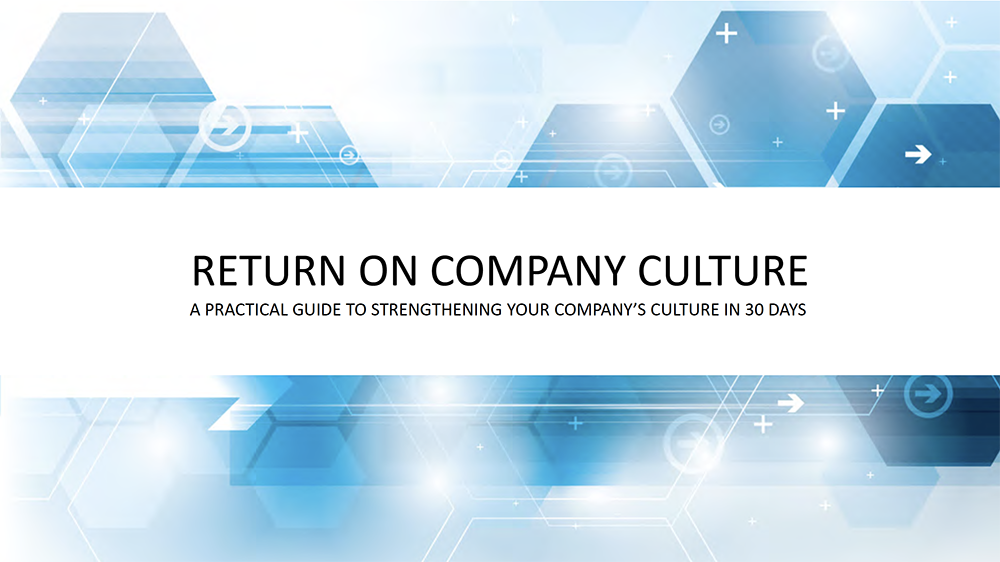I had originally titled this article, “Why Feelings Matter and How to Measure Them”.
After scratching out a first draft, I realized the core of the article argued the obvious. Feelings matter in the workplace because the workplace is made up of people; and how people feel impacts every aspect of their lives.
Assuming feelings are a given within every organization, we can focus on how to measure the implications and impacts feelings have on corporate culture and ultimately performance.
Before getting into how to measure feelings, I think it is important to briefly summarize our findings on the implications and impacts of feelings within the workplace. Here at The Culture Think Tank, our focus is on identifying KPIs and metrics of culture and transforming our findings into levers executives and organizational leaders can use to drive performance.
In the case of feelings, our analysis shows that the feelings of individuals within the workplace directly impact how connected individuals feel towards their organization, senior leaders, and direct supervisor or boss.
A greater sense of connection correlates to a greater sense of culture, which ultimately impacts performance. Utilizing these findings, we developed the Feelings Index which measures how connected a workforce feels and can be used to track trends (connection) over time.
The Feelings Index is an easy-to-understand framework that measures the degree of connecting / distancing within an organization. The analytics behind the Feelings Index are based on questions specifically designed to capture how individuals within an organization feel. Each answer is correlated or tagged as either “Distancing” or “Connecting”.
Through this simple tagging technique, we can provide our members a snapshot of how connected their organizations, divisions, departments, or teams feel at a moment in time and provide a trend line that shows the degree of connection over time.
What I like most about the Feelings Index is that it is a leading indicator. It allows executives and organizational leaders to quickly and easily see if the actions they are taking are bring their organization together and are having a positive impact.
What is important to note and what we discovered during the COVID-19 crisis is a positive impact does not necessarily mean a reduction in the degree of disconnecting or an increase in the degree of connecting. There is often a shift in feelings that needs to be addressed before the degree in connecting can improve.
For example, at the onset of the COVID-19 crisis, “Anxious” was the most significant disconnecting feeling scored across nearly every organization. Those organizations that addressed the sense of anxiety through increased transparency, better communication, and other techniques didn’t see a reduction in the degree of disconnecting. Instead, many saw a shift from “Anxious” to “Overworked” and “Stressed”.
When we investigated further, what we discovered was the steps to address the feeling of “Anxious” worked, but they had an unintended consequence. Once the workforce got over the feeling of “Anxious” and understood what they could do to make a difference, many of them tried to do too much and struggled with their work life balance when they were working from home. They simply didn’t know when to end their workday and / or felt guilty ending their workday when there was so much to do.
This led to a shift in focus among executives and senior leaders that prioritized providing clarity and adjusting the manner in which tasks were set and communicated.
The strength of the Feelings Index is its simplicity. By monitoring and tagging feelings, executives and organizational leaders gain visibility to the pulse of their organizations and the insights they need to make the little adjustments that can have a significant impact on culture and performance.
If you are interested in learning more about how to measure and track your Corporate Culture or the Well-Being of your workforce and the impact on performance, you may be interested in our E-Book:

About the author
William Lindstrom found his career niche in helping organizations achieve their business and financial objectives through technology and analytics. Read More
-
William Lindstromhttps://www.theculturethinktank.com/author/wlindstrom/August 10, 2021
-
William Lindstromhttps://www.theculturethinktank.com/author/wlindstrom/July 14, 2021
-
William Lindstromhttps://www.theculturethinktank.com/author/wlindstrom/June 1, 2021
-
William Lindstromhttps://www.theculturethinktank.com/author/wlindstrom/April 8, 2021









